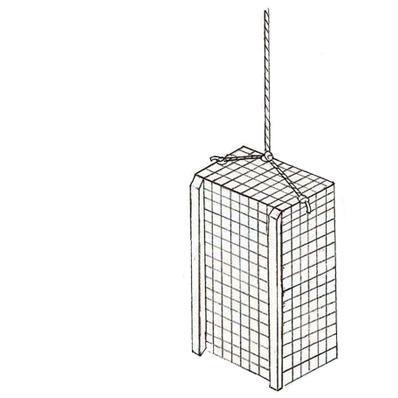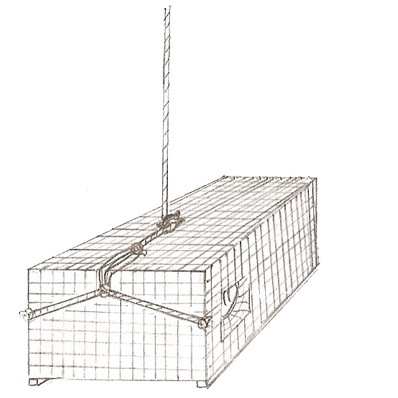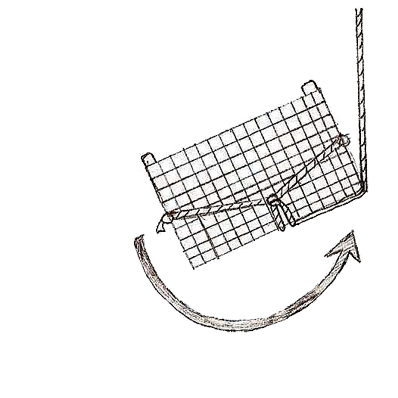The Key Principle
Redirect the force of drag to make it work for you, not against you

An unaided trap will naturally nose-down
It is the drag of the warp from the bridle that makes a trap naturally tend to nose down. The trap may land on its end, or roll over onto its side or even upside-down.
Such a landing can create more work for a lobster to access the entrances to the trap, making it less likely to be caught.

Redirecting the force of drag
The Steady Clip utilizes the same drag from the warp, but temporarily fairleads the warp from the top of the trap (the door) instead of from the end of the trap, where the trap is bridled.

Reorienting a severely upset trap
The Steady Clip will even right a trap which has been upset by prop wash or other source of disturbance.
This can be seen particularly clearly in our underwater video, when a trap is intentionally set upside down.
Once righted by the Steady Clip, it is nearly impossible for a trap to assume any position other than upright, all the way to the ocean bottom.
The Steady Clip is specifically designed to easily release the warp when it is pulled in an upward direction, such as when the trap is being hauled. The Steady Clip works on a trap with any door-closure method. When setting, the Steady Clip has enough power to set a stationary four-foot trap at eight knots without releasing the rope. This dual capability is possible because of the specific design of the Steady Clip.